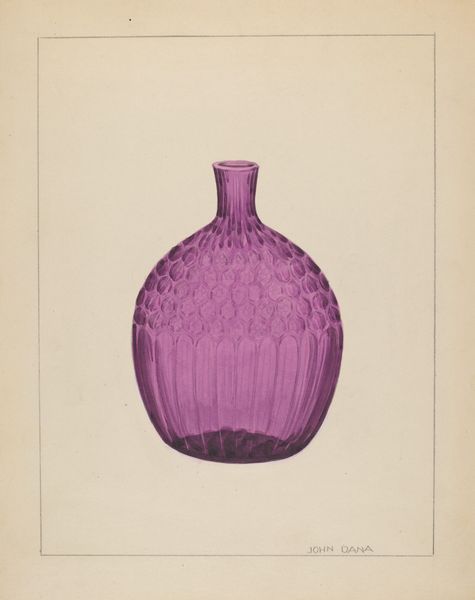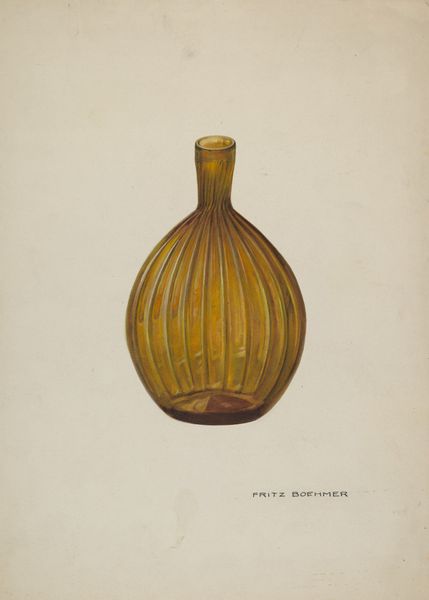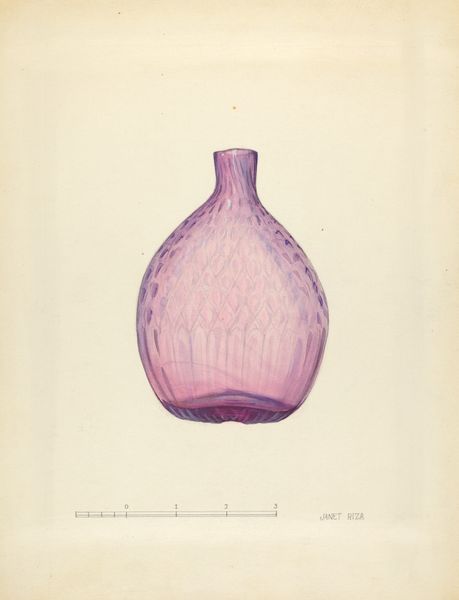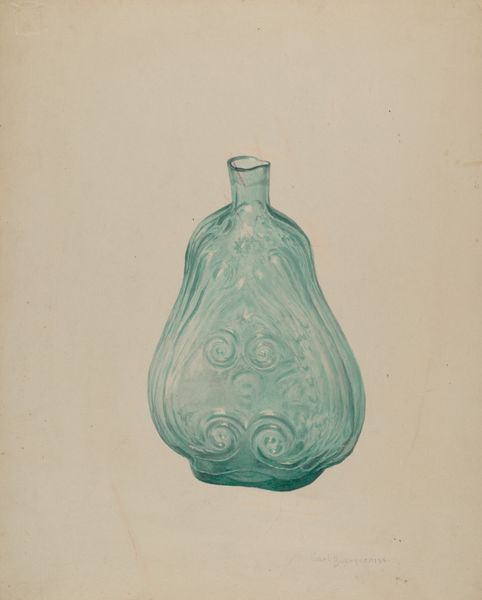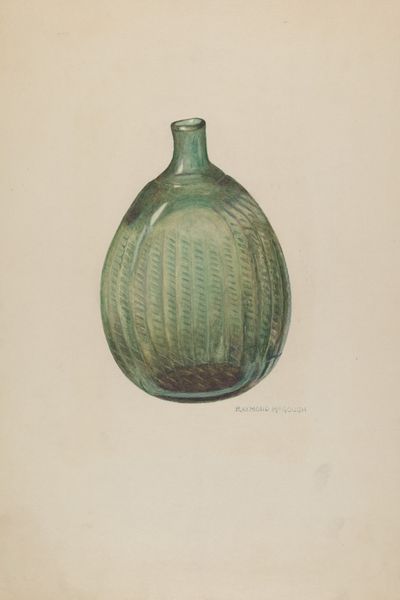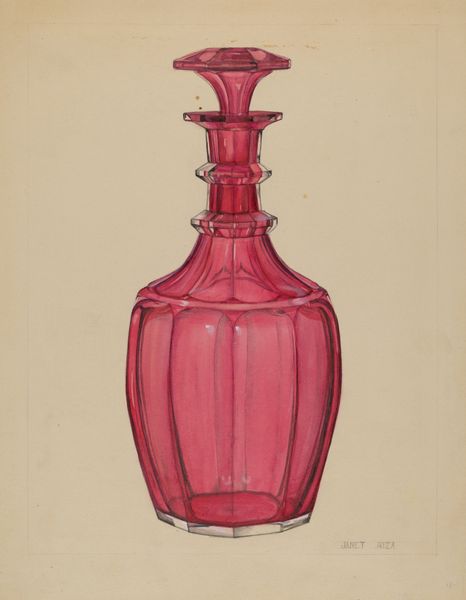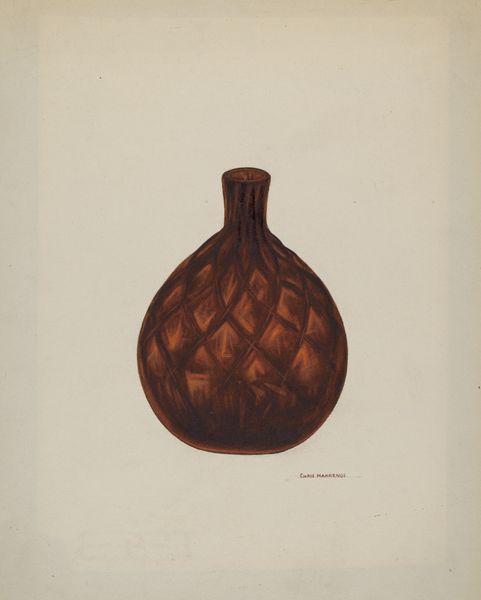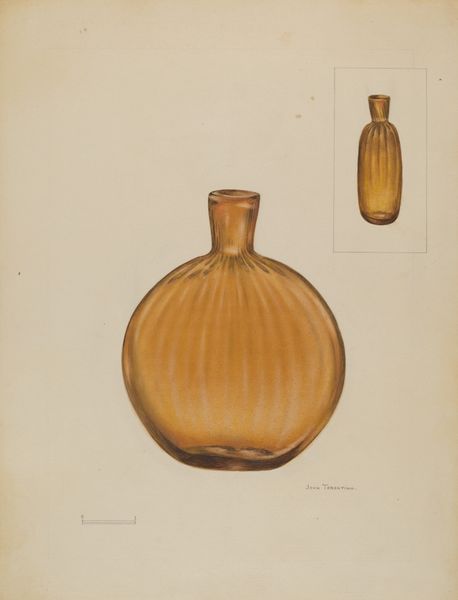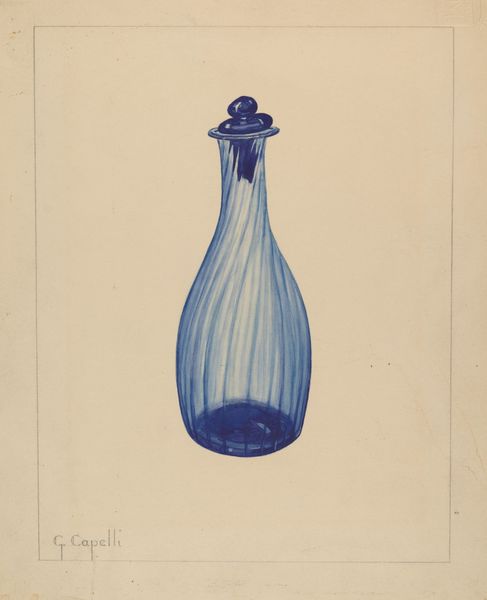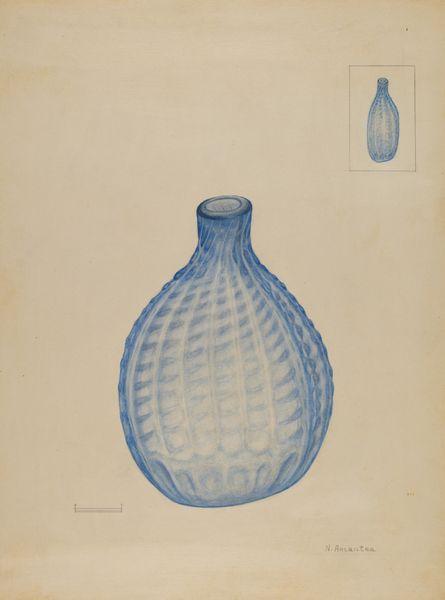
drawing, glass, watercolor
#
drawing
#
glass
#
watercolor
#
decorative-art
#
realism
Dimensions: overall: 28.9 x 22.6 cm (11 3/8 x 8 7/8 in.)
Copyright: National Gallery of Art: CC0 1.0
Curator: The delicacy! The way light plays across the multifaceted glass, a study rendered in watercolor and drawing media around 1940. The piece is simply titled "Glass Cologne Bottle" by John Dana. It’s quiet, almost ethereal, isn’t it? Editor: Absolutely. The mauve shade imbues a certain somber elegance. Given the bottle's purpose, cologne, I can't help but consider who had access to such luxury items during wartime. Curator: Luxury and fragrance, bottled history, precisely. The rosette pattern repeating around the bulbous form evokes heraldic imagery, suggesting class, ritual, a legacy of adornment and preparation for social life. The bottle could represent aspirations of grace amidst conflict. Editor: Or a means of masking less pleasant realities? Scent as a symbol, after all, is often employed to cover undesirable smells, a privilege unavailable to the masses enduring shortages, rations and systemic oppression. How do we address the dissonance in depicting this domestic ideal? Curator: It could point to the tenacity of symbolic language even in dire times, perhaps becoming even more acute and important. An object of hope, a talisman almost? Fragrance transcends mere utility, offering fleeting, transformative sensations. The rendering elevates it beyond a functional item, turning it into an archetype of sophistication and well-being. Editor: But an archetype potentially steeped in gendered expectations, wouldn’t you say? Cologne, historically marketed and linked to the performativity of attractiveness, especially towards women? It asks how such items also serve as silent directives around gender, power, beauty, all interwoven with socio-economic status. Curator: Interesting—it almost reminds me of religious iconography. Consider the presentation: centered, illuminated softly, drawing the eye upwards. One might associate it with offerings, a devotional object centered on themes of aspiration. Editor: Right. But shouldn't the image equally incite contemplation? A reckoning with the systemic inequality embedded even within mundane domesticity? How many remain disenfranchised from such "universal" symbols of beauty? Curator: Your perspective really broadens how we consider the object. Thank you, as always, for giving me new insights to ponder! Editor: And thank you—it helps to always rethink ways an object encodes political messages.
Comments
No comments
Be the first to comment and join the conversation on the ultimate creative platform.

